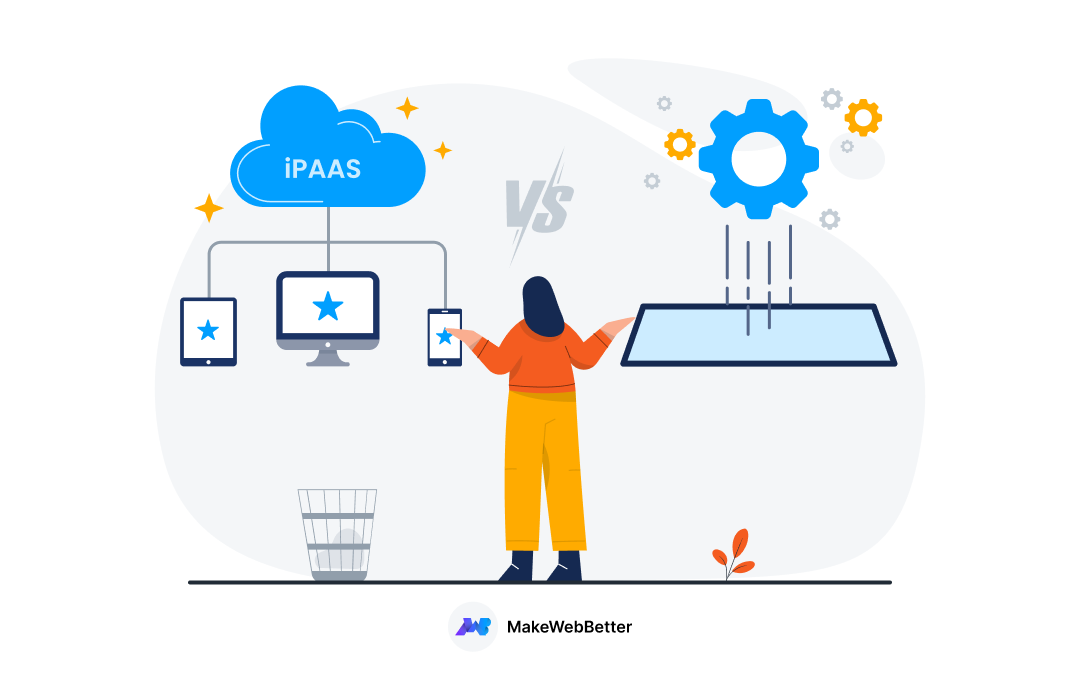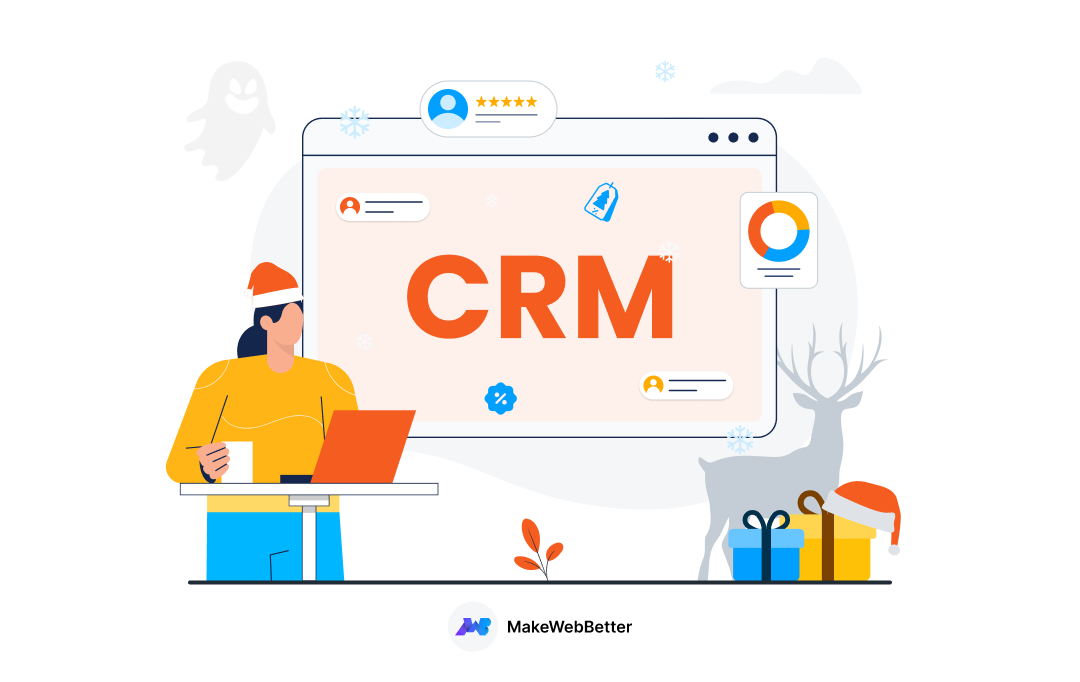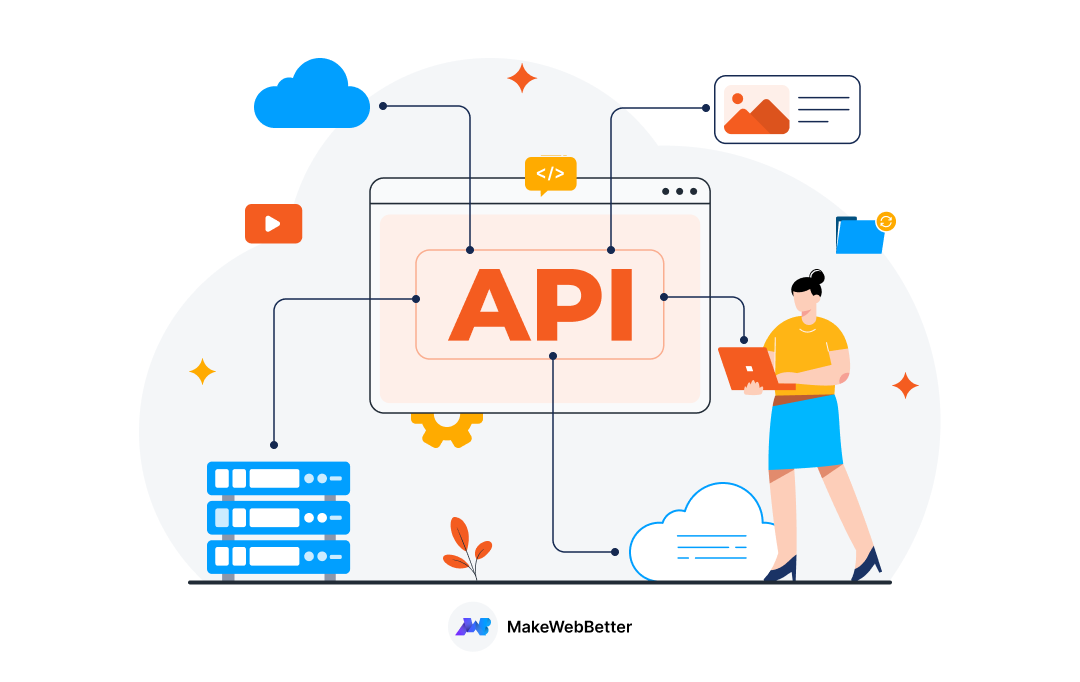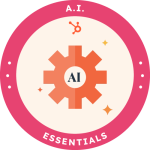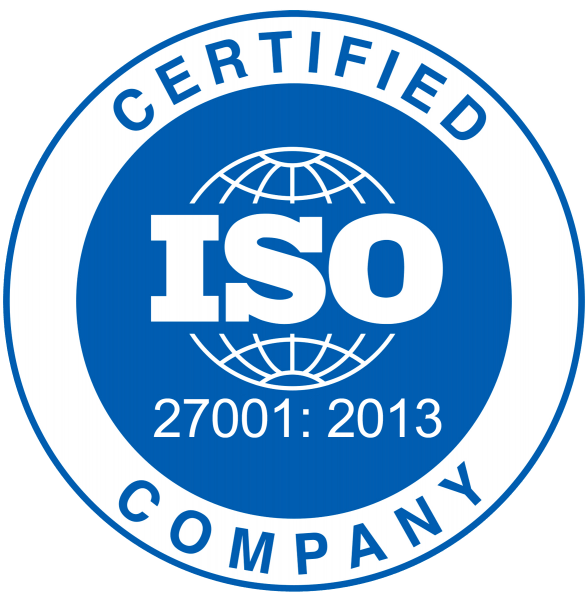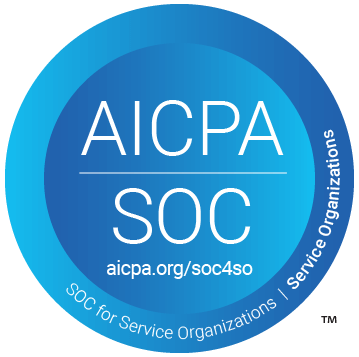When we talk about iPaaS vs traditional integration—it all melts down to sustainability. Ultimately, using iPaaS solution or integration middleware ties back to scope scalability for adapting to market changes.
There are certain other aspects too, such as coding complexities, siloed systems, technical debt, productivity, and data risks. Moreover, there could be case-specific scenarios and compliance constraints that influence the choice.
Let’s break it down, start from the soup, and gradually find out the scales for the key differences in iPaaS vs traditional integration.
What is iPaaS?
An iPaaS (Integration Platform as a Service) is a standalone cloud integration platform, specifically built for facilitating interconnected cloud infrastructure. The platform neatly solves multiple integration challenges and offers tremendous opportunities.
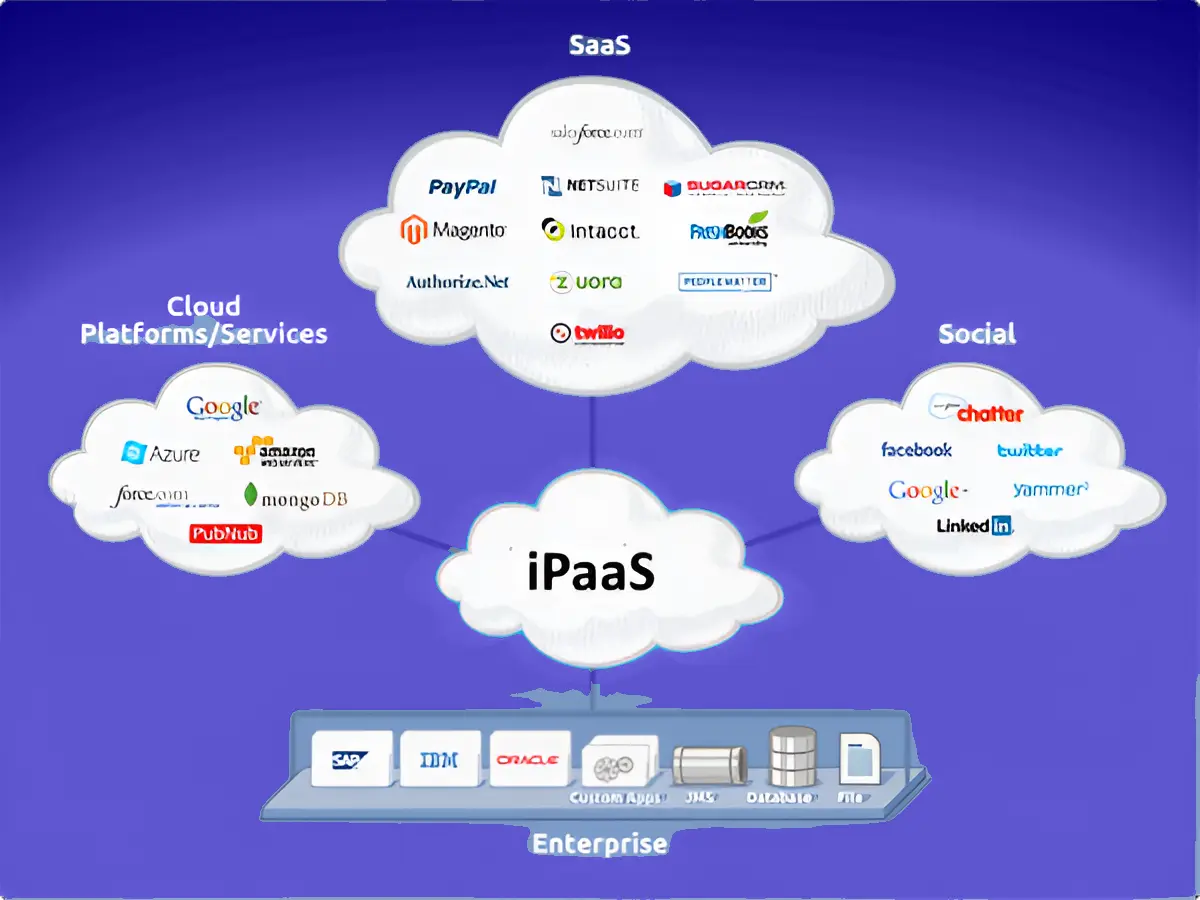
iPaaS platforms are designed to reduce the complexities of custom integrations, providing pre-built connectors and real-time data synchronization.
Surpassing the basic–smart data integration and shared data, it enables communications between fragmented systems. This ultimately, paves the path for seamless automation, collaboration across departments, and enhanced operational efficiency.
What is Traditional Integration?
Traditional integration refers to one-off middleware software, custom integrations often developed in-house or by third-party vendors. These integrations involve writing complex code to link various systems, such as CRM, ERP, or accounting software. While cloud based middleware software can be highly customized, it often comes with significant drawbacks.
For one, it’s costly and requires constant efforts—skilled developers to write and maintain the code. Additionally, middleware software is prone to errors, especially when systems or software versions change. The result is often a patchwork solution that’s difficult to scale as your business grows.
Where Does Traditional Integration Fit In?
When it comes to iPaaS vs Traditional integration—the latter would only make sense when you require one-off integration. Mostly, one-off integrations are used for data migration and custom requirements. It is ideal for small businesses or entrepreneurs who have minimal expectations of expansion in the near future. You must also have the capacity for complex coding and seasoned technical expertise.
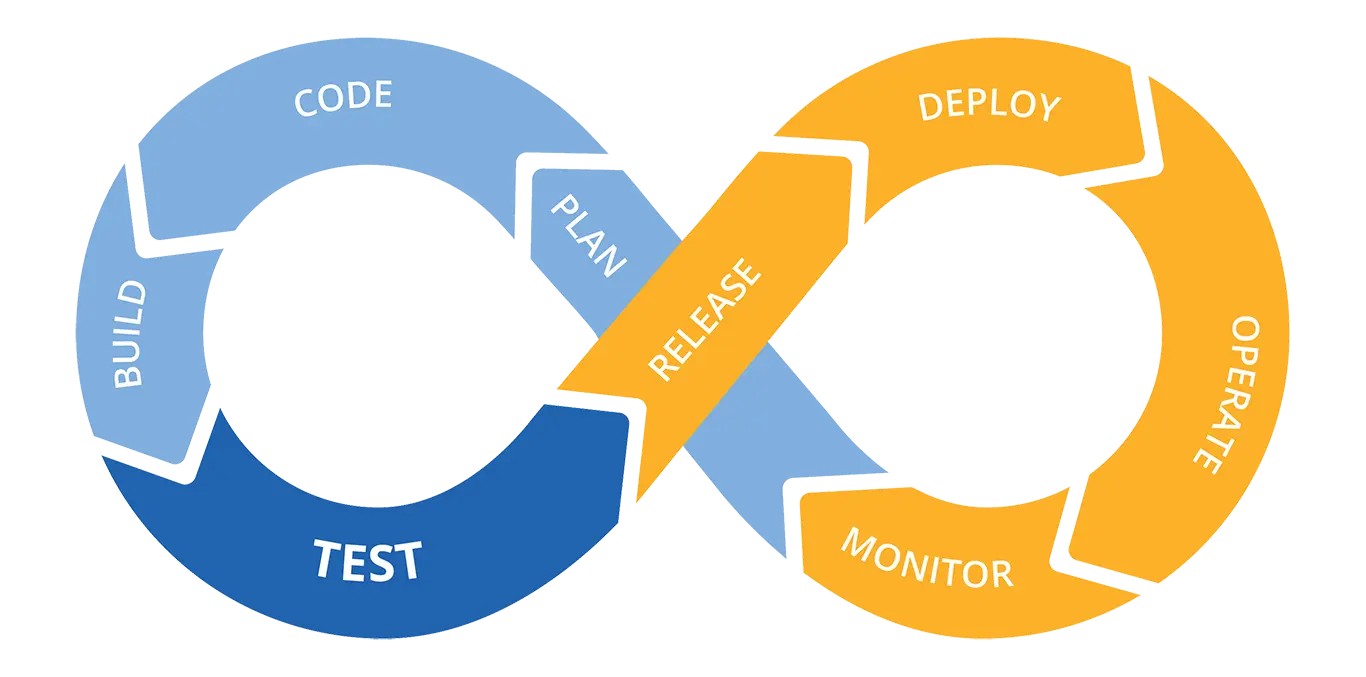
iPaaS connectors may tie businesses to their iPaaS vendors, though many act as multi-cloud integration platforms and hybrid integrations. Vendor lock-in is usually ruled out in cloud based middleware as they are one-time investments, typically tailored to the business integration. However, migrating or scaling the integration can be highly challenging in one-off integration middleware solutions.
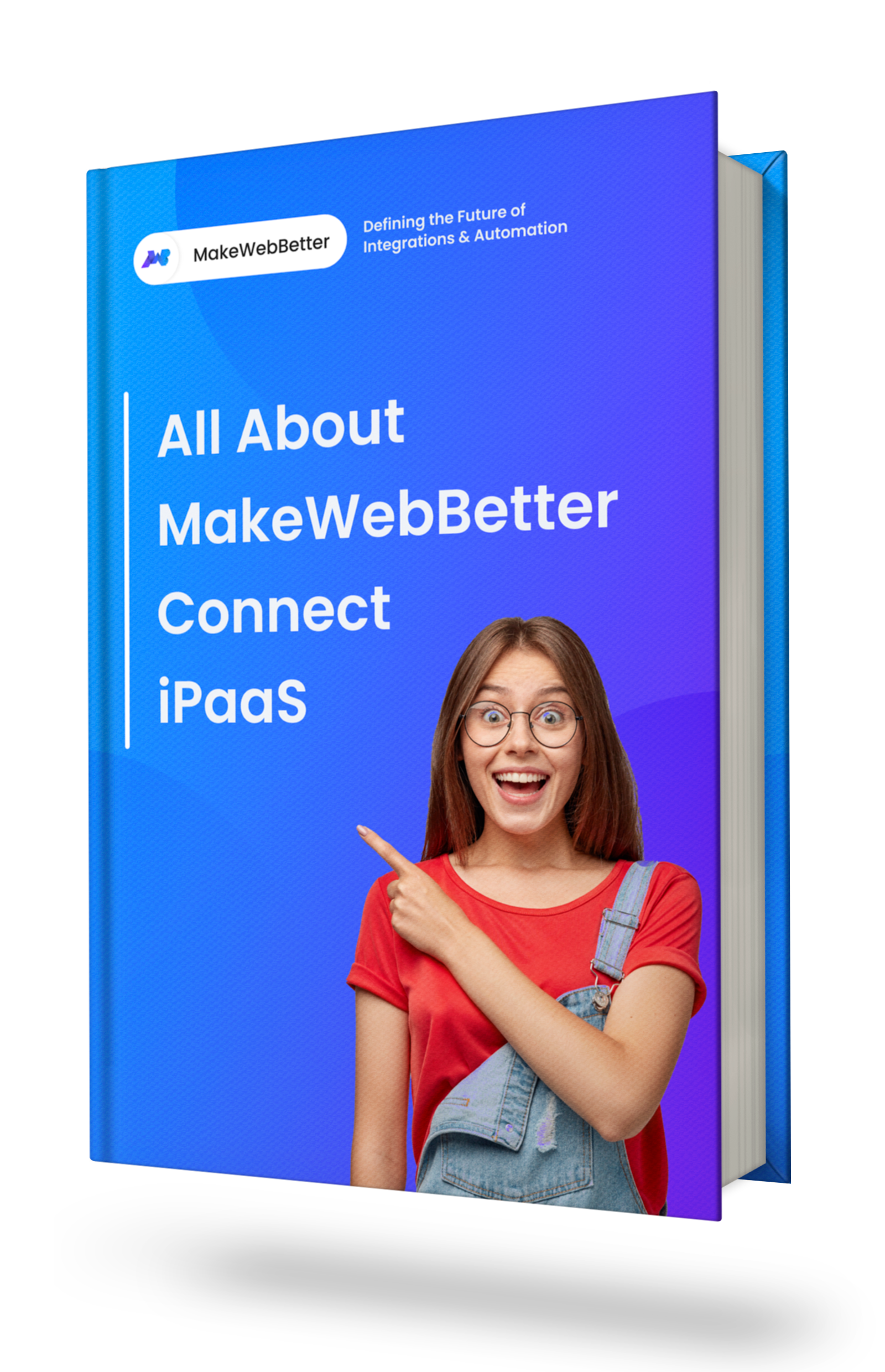
Going With iPaaS?
Your fragmented data sits on an untapped potential—unlock it with MakeWebBetter Connect iPaaS and discover how data automation can revolutionize your growth strategy.
Key Differences: iPaaS vs Traditional Integration
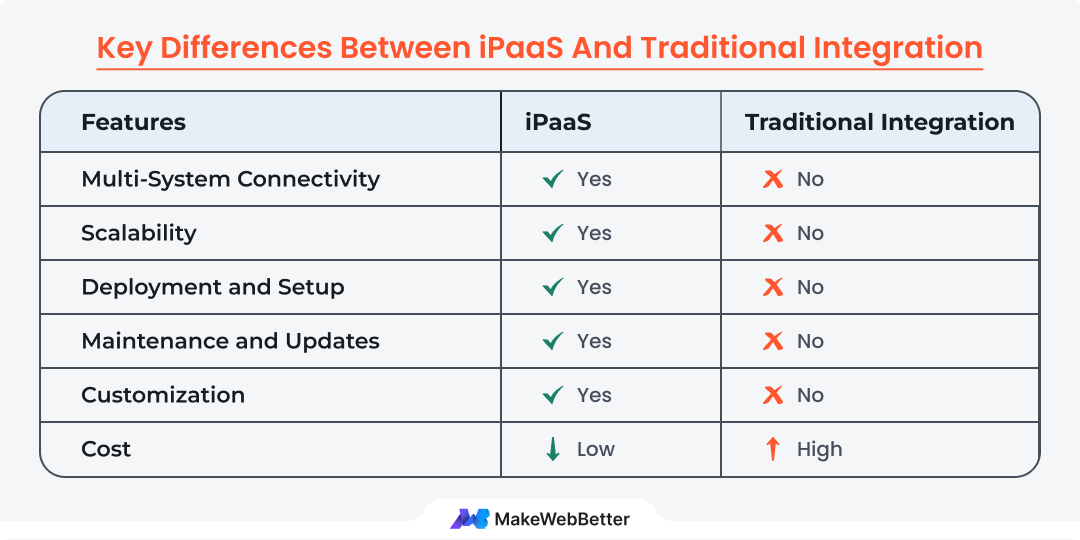
For a transparent iPaaS vs traditional integration comparison, businesses must evaluate their long-term goals, operational efficiency, and integration agility to determine the most suitable approach.
An iPaaS software supports a broad ecosystem of applications and scales effortlessly as businesses grow. While cloud based middleware may require redevelopment or significant investment to scale with new systems or growing data volumes.
Multi-System Connectivity
Traditional integration is typically built for point-to-point or limited system connections, making it increasingly complex and resource-intensive as more platforms are added. Contrarily, iPaaS tools are designed to handle multiple integrations across several systems and it can host both on-premise and cloud-based. On top of that, iPaaS platforms can help you automate data sync over connected platforms with a single trigger, eliminating manual effort to a greater extent.
Scalability and Flexibility
The comparison—iPaaS vs traditional integration, is all about scope of scalability! Businesses are built to evolve and grow exponentially, so when en route having an iPaaS software will work wonders. iPaaS connectors are built to scale, the flexible architecture easily accommodates growing data volumes. Also, iPaaS vendors manage upgrades themselves. While integration middleware solutions are often rigid and limited in scope.
Cost and ROI Considerations
The best iPaaS platforms are generally wrapped up in well-structured pricing plans, offering clear value propositions and a defined feature set without a fuss. Thus, the iPaaS subscription-based model easily ensures predictable costs, making ROI calculation straightforward. Meanwhile, traditional integrations often require high upfront fees and ongoing maintenance expenses while delivering a narrower value proposition.
Deployment and Setup
Traditional integrations are more about custom requirements and are often built on-premise, involving all the software setup, custom code, APIs, and a whole lot of technicalities. The iPaaS solution is cloud-based and well-suited for hassle-free deployment with minimal developer involvement. The iPaaS comparison with integration middleware software suggests that it requires little to no infrastructure setup, thanks to prebuilt connectors and ready-to-use workflows.
Maintenance and Upgrades
With iPaaS tools, maintenance is effortless. Since it’s hosted on the vendor’s servers, updates, new features, and security patches are rolled out by iPaaS providers—no extra effort is required. Middleware software, on the other hand, is one-off connectors that demand manual upgrades and ongoing maintenance. This not only adds to the workload but can also make it difficult to keep up with platform changes, leading to potential data sync issues in the future.
Customization
Traditional integration is fully customizable and built from the ground up to meet specific business needs. However, this level of customization often requires extensive development time and resources. iPaaS tools, on the other hand, strike a balance between ease and flexibility by offering pre-built connectors for popular applications, along with low-code/no-code tools for quick customization. Additionally, the most of best iPaaS platforms provide options for custom integrations.
So, whenever there comes a question on iPaaS vs traditional integration, you can check your requirements on the basis of the following parameters.
MakeWebBetter Connect iPaaS
MakeWebBetter Connect is an (Integration Platform as a Service) iPaaS solution, built by HubSpot Elite Solutions Partner with 10+ years of experience. This iPaaS is ideated to bridge your disconnected tools and legacy systems with cutting-edge technologies such as HubSpot CRM, cloud computing, AI, and other SaaS platforms.
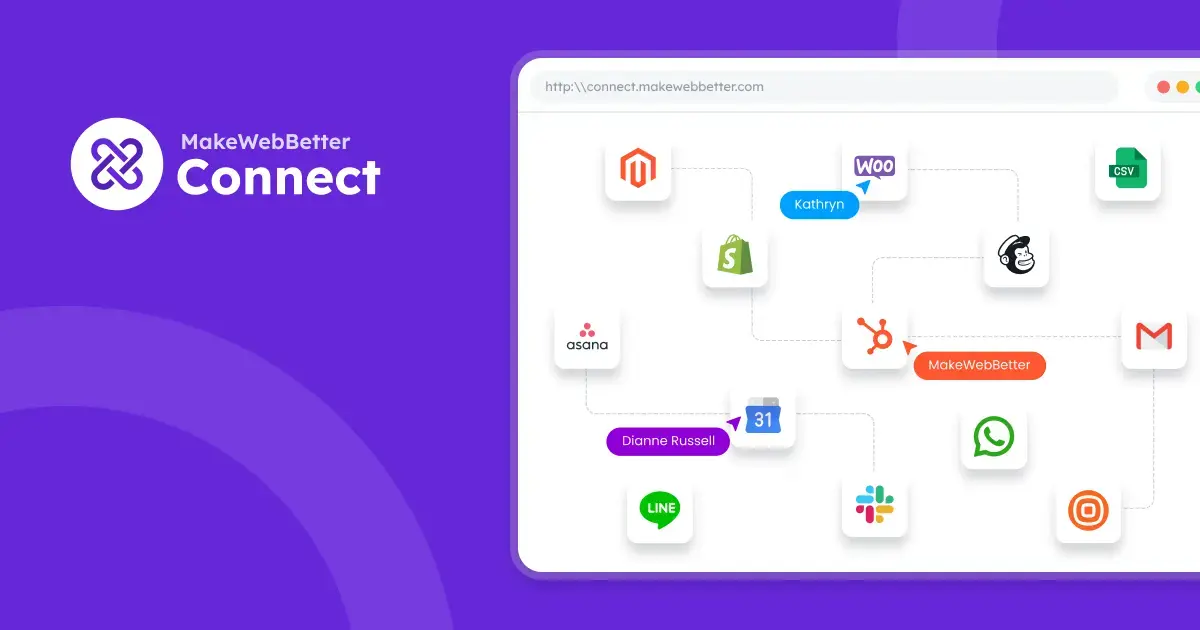
Whether you are connecting a couple of applications or bringing over your entire data ecosystem. MakeWebBetter Connect scales with you!
With support for over 1,000 platforms, custom integration capabilities, and a low-code/no-code approach, it adapts to your unique needs. Moreover, there’s going to be an embedded iPaaS solution soon. Plus, you get to automate data processes and deploy integrations strategically guided by popular workflow templates.
It simplifies complex connections, enabling effortless data exchange across your entire tech stack—far beyond just HubSpot. The ecosystem of connectors has tools for marketing, sales & CRM, AI, productivity, payment processing, and everything you require. Here’s what sets MakeWebBetter Connect apart:
- Vast ecosystem of 1000+ App Integrations.
- Custom App Integration Builder.
- Install your app connector (connected with multiple platforms automation).
- Workflow Builder with conditional logic.
- Workflow Templates.
- HubSpot CRM Card Builder.
- Project management and user role.
- Advanced Workflows Runs Log.
- Embedded iPaaS solution (coming soon).
Contact us to resolve your queries on the iPaaS and explore about MakeWebBetter Connect.
How MakeWebBetter Connect iPaas Delivers Better for Modern Businesses?
When you’re through the iPaaS vs traditional integration, you’ll know MakeWebBetter Connect ticks all the boxes in this iPaaS comparison.
Imagine not having to deal with disconnected systems and scattered data. You get to command all your data flows and all your integration needs through a centralized podium. With built-in automation, MakeWebBetter Connect iPaaS facilitates—data integration, mapping, structuring, segmentation, reporting, and automation in everything. Alongside a multifaceted approach with iPaaS software, guided by automation, you eliminate manual overhead and keep systems aligned like a piece of well-oiled machinery.
Here is what’s more to it!
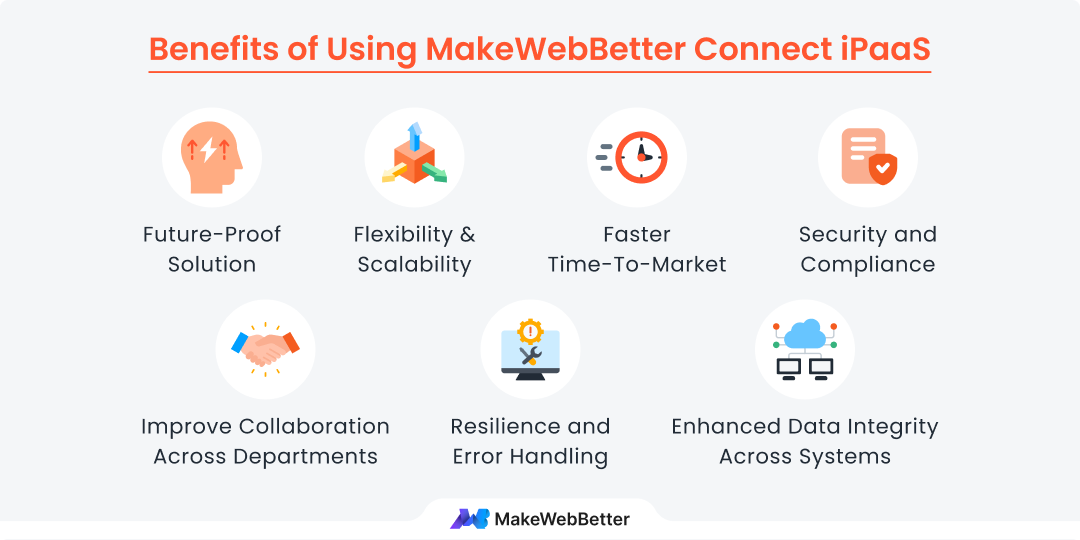
Faster Time-to-Market
Time is a competitive advantage, and MakeWebBetter Connect accelerates your go-to-market strategy by reducing integration complexity. Soon, you’ll have an embedded iPaaS solution with it. Prebuilt connectors and low-code/no-code integrations eliminate the need for lengthy development cycles and deploy integration in a jiff!
Improved Data Integrity Across Systems
Imagine data integrity and consistency without lifting a finger. Once you have the connected systems and data automation in place, you rule out discrepancies. This helps you ensure data accuracy across your entire tech stack. Whether it’s your on-premise tools, CRM, analytics, or your entire infrastructure, you can have it connected with the best cloud integration platforms.
Enhanced Collaboration Between Departments
Eradicating data silos across your organization is always a priority. The MakeWebBetter Connect iPaaS solution paves the way for easy project management. To facilitate this agile approach, you get unified systems and consistent data across departments and respective tools.
Future-proof Solution with Constant Updates
No more time-intensive upgrades! MakeWebBetter Connect evolves with your business. Unlike integration middleware solutions requiring constant maintenance, iPaaS connectors receive regular updates, ensuring compatibility with the latest tools, security patches, and emerging industry trends—keeping you ahead of the curve.
Resilience and Error Handling
MakeWebBetter Connect offers built-in error handling, intelligent retries, and monitoring tools to detect and resolve workflow automation issues proactively. It doesn’t allow integration and automation failures to disrupt business operations—minimizing downtime and ensuring seamless data flow.
Security and Compliance
MakeWebBetter Connect does not store any data and is designed with enterprise-grade security. It uses encryption for keys, APIs, and other information shared by the user, in compliance with data regulations such as GDPR, HIPAA, or CCPA. It proved to be one of the best iPaaS platforms that demonstrate a greater commitment to robust security and data privacy practices.
Build Integration Seamlessly
Don’t let disconnected systems slow you down. MakeWebBetter Connect brings all your apps together, automates workflows, and keeps your data in sync—effortlessly.
iPaaS Vs Traditional Integration—Which approach is more feasible for business growth?
In a nutshell, there is always scope for the suitability of both integration approaches in modern businesses. For accurate iPaaS comparison, you’ll have to analyze your needs and proceed with the vision of the future.
- Integration Platform as a Service offers ease of use, reduces technical debt, and involves limited tech expertise. Plus, it offers a unified suite of integration alongside consistent data and reduced manual overheads across multiple systems.
- When you choose the latter in iPaaS vs Traditional integration, you opt for complex coding, siloed systems, and high error risks.
Verdict: On the scale of growth, the iPaaS solves better for agile and scalable business models, while integration middleware software slows down the processes in the long term.
Next Steps: Deploy MakeWebBetter Connect to stay ahead of market shifts, streamline operations, and drive efficiency—all with a future-ready integration platform for the ever-evolving business world.

